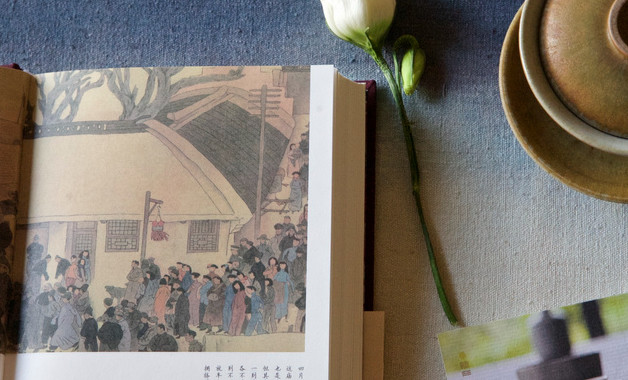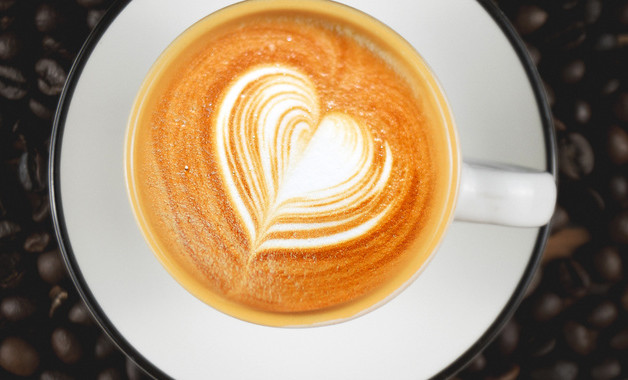- 目录

第1篇 上海豫园的精彩导游词
早上好!女士们、先生们。大家昨晚睡提好吗?好极了。真对不起,昨晚行李送迟了。因为行李车坏了,我们只得再要了一辆。顺便问一下,你们行李打开了没有?怪不得外面阳光明媚。我们导游常说:”客人把阳光装在包里带来了。”为此我谢谢你们。好言归正传。早餐的我已宣布过日程安排,今天我们先去海老城,也就是豫园、豫园商场的所在地。
我们的车正行驶在外滩。诸位左侧就是著名的黄浦江。我们以后会到这儿来的。
为了节省时间,在没到豫园之前我先讲些中国园林和豫园的情况。
在中国,园林被分为三大类:皇家园林、私家园林和寺庙园林。豫园属于私家园林。中国园林有许多技巧,比如借景、障景等等。不过它们都由四个基本因素组成。这四个因素是水、植物、建筑和假山。大多数的私家花园是在江南,就是因为这儿多水源和适宜做假山的石。豫园是四百多年前明朝时建。园主姓潘,是个大官。他建此园是取悦于双亲,让他们安享晚年。所以豫园的”豫”字就取其豫悦之意。可惜的是他父母末能眼见豫园落成就去世了。清末,潘家衰弱,其后代变卖此园于当地行会。豫园之所以成为名胜,还另有一原因。1853年,上海爆发小刀会起义,园内一厅堂曾被用作指挥部。今天豫园是个必游之地。所以我建议到了那儿我们千万不要走散,最好大家寸步不离,好吗?
这儿是停车场。万一有人走散,请记住车号最后三个数字是121。我想最好不要发生这类事。我会举着小红旗,你们全陪张先生会殿后。大家准备好了没有?我们上路吧。下车时请注意自行车。
女士们、先生们,这座就是著名的九曲桥。为什么是九呢?因为是阳数最高的数。走在桥上,逗留时间就长。还可以从不同角度观赏风景。还有,据说鬼怪只能走直线,所以你不必为遇到鬼怪而担心。
在桥的中间,有座亭子,始建于清朝,大约在80多年前被改作一茶馆。老人们喜欢早晨来此,会会朋友,沏上一壶茶,聊聊天儿。一般他们喝的都是一种绿茶,叫做”龙井”。这个茶馆也是外国首脑常来之地。比如1986年英国女王伊丽莎白二世来上海,也亲临茶馆喝了茶。
确实,能在这儿喝上一壶也是一种享受。试想一下,在一个夏日,你来到茶馆,临窗而坐,俯视着开满荷花的绿池。迎面吹来阵阵凉风。在悠雅的江南丝竹声中,你提起紫砂壶,慢慢地呷上一口微温的”龙井”茶。你会觉得飘然若仙。
你们也想喝一壶?对不起,我还是不能让你们去。等我们看完豫园再做决定,行不行?
这儿就是豫园的入口。当你走进一个私家花园,视线总会被什么东西挡住,有时是假山,有时是这肃的照壁。这是园林一技巧,称之为障景。不让你一日了然,却让你看到一部分,然后才达到”步移景易”的效果。
这座堂叫”仰山堂”。大家知道,上海位于一冲积平原,市内无山、无林。所以此”山”就指对面那座假山。它高12米,重80吨。它过去乃至今天一直是个奇迹。因为四百多年前没有水泥和熟石膏,人们就用烹煮过的糯米,加上明矾和石灰,把石块粘起来。至今安然无恙。看见山顶的亭子吗?四百年前,这是上海城最高点。从那儿可看到黄浦江上的渔船、帆影,可这些今天只能在电影中见到了。你也仅能看见他们上移的头顶。因为盘旋的小径皆被树、石遮住。这实在是园艺大师张南阳的杰作。也被公认是本地最佳假山。
在假山之后,有座龙墙。这是本园一特色。总共有五条龙墙。这边走,我要带你们去个地方,那儿能清楚地看见另一条龙墙。
女士们、先生们,这就是我刚才说的那条龙墙。龙实际上是想像出来的动物。我们称自己为龙的传人。不知道大家是否读过赛珍珠的《龙籽》。如果看过的话,这儿很多东西令你觉得熟悉。请看这条龙,你会发觉这是个多种动物的综合体。你看它头似牛,眼似虾,角似……我看不太像牛。我们通常说角似鹿,身似蛇,鳞似鱼,爪似鸡或者鹰。请告诉我,你们看见几个趾。三个对。但一般龙应有五趾。为什么是三个呢?其中有一故事。以前,只有皇帝和皇室人员才配有龙的图案。园主潘允端用了龙做墙,他有野心。不知怎么,皇帝得知此事,便派人来调查。潘允端得悉后,立即令人敲下两个趾。当朝延官吏一到,园主说:”瞧,这本不是龙,只有三趾。”真是个聪明人,不然他性命难保。
你们说想拍一集体照。我看以龙墙为背景,这可是最佳的地方,我来替你们拍,别忘了说”cheese”。
这儿我们可看见三块石头。中间那块称作”玉玲珑”。这并非是玉,但是挺有名,叫太湖石,外型是由水侵蚀而成。这原来是给宋微宗的贡品。宋微宗广收奇花异石,称”花石纲”。可怎么会到这儿来的呢?原来,在运往当时京都遗失了。多年之后,又成了地地方官绅的玩物。后来他把该石送给潘允端做嫁妆,因为潘的兄弟娶了他女儿。玉玲珑因有”瘦、透、皱、漏”等特点而著称。假如你自上而下倒水。它72孔孔孔犹如小瀑布;如你在下方燃香,它72孔孔孔烟香缥缈,非常美丽。园主以前常凝视此石多时,留连忘返。这也是园林功效之一,一个景物使你沉思,结果达到情晚合一的境界。
第2篇 上海豫园景区导游词
上海豫园景区导游词范文(精选)
作为一位杰出的导游,总不可避免地需要编写导游词,完整的导游词,其结构一般包括习惯用语、概括介绍、重点讲解三个部分。那么应当如何写导游词呢?以下是小编为大家收集的上海豫园景区导游词范文(精选),欢迎阅读与收藏。
上海豫园景区导游词1
各位旅客:
大家好!
大家昨晚睡提好吗?好极了。真对不起,昨晚行李送迟了。因为行李车坏了,我们只得再要了一辆。顺便问一下,你们行李打开了没有?怪不得外面阳光明媚。我们导游常说:”客人把阳光装在包里带来了。”为此我谢谢你们。好言归正传。早餐的我已宣布过日程安排,今天我们先去海老城,也就是豫园、豫园商场的所在地。
我们的车正行驶在外滩。诸位左侧就是著名的黄浦江。我们以后会到这儿来的。
为了节省时间,在没到豫园之前我先讲些中国园林和豫园的情况。
在中国,园林被分为三大类:皇家园林、私家园林和寺庙园林。豫园属于私家园林。中国园林有许多技巧,比如借景、障景等等。不过它们都由四个基本因素组成。这四个因素是水、植物、建筑和假山。大多数的私家花园是在江南,就是因为这儿多水源和适宜做假山的石。豫园是四百多年前明朝时建。园主姓潘,是个大官。他建此园是取悦于双亲,让他们安享晚年。所以豫园的”豫”字就取其豫悦之意。可惜的是他父母末能眼见豫园落成就去世了。清末,潘家衰弱,其后代变卖此园于当地行会。豫园之所以成为名胜,还另有一原因。1853年,上海爆发小刀会起义,园内一厅堂曾被用作指挥部。今天豫园是个必游之地。所以我建议到了那儿我们千万不要走散,最好大家寸步不离,好吗?
这儿是停车场。万一有人走散,请记住车号最后三个数字是121。我想最好不要发生这类事。我会举着小红旗,你们全陪张先生会殿后。大家准备好了没有?我们上路吧。下车时请注意自行车。
女士们、先生们,这座就是著名的九曲桥。为什么是九呢?因为是阳数最高的数。走在桥上,逗留时间就长。还可以从不同角度观赏风景。还有,据说鬼怪只能走直线,所以你不必为遇到鬼怪而担心。
在桥的中间,有座亭子,始建于清朝,大约在80多年前被改作一茶馆。老人们喜欢早晨来此,会会朋友,沏上一壶茶,聊聊天儿。一般他们喝的都是一种绿茶,叫做”龙井”。这个茶馆也是外国首脑常来之地。比如1986年英国女王伊丽莎白二世来上海,也亲临茶馆喝了茶。
确实,能在这儿喝上一壶也是一种享受。试想一下,在一个夏日,你来到茶馆,临窗而坐,俯视着开满荷花的绿池。迎面吹来阵阵凉风。在悠雅的江南丝竹声中,你提起紫砂壶,慢慢地呷上一口微温的”龙井”茶。你会觉得飘然若仙。
你们也想喝一壶?对不起,我还是不能让你们去。等我们看完豫园再做决定,行不行?
谢谢大家!
上海豫园景区导游词2
各位旅客:
大家好!
豫园原是明代的一座私人园林,始建于明代,截止2022年已有四百余年历史。
园主人四川布政使潘允端从1559年(明嘉靖己未年)起,在潘家住宅世春堂西面的几畦菜田上建造园林。经过二十余年的苦心经营,建成了豫园。“豫”有“平安”、“安泰”之意,取名“豫园”,有“豫悦老亲”的意思。
豫园当时占地七十余亩,由明代造园名家张南阳设计,并亲自参与施工。古人称赞豫园“奇秀甲于东南”,“东南名园冠”。
潘允端晚年家道中落。1601年(明万历二十九年)潘允端去世,潘氏家庭日趋衰微,无力承担园林修缮和管理所需的巨大开支。明朝末年,豫园为张肇林所得。其后至1760年(清乾隆二十五年),为不使这一名胜湮没,当地的一些富商士绅聚款购下豫园,并花了二十多年时间,重建楼台,增筑山石。因当时城隍庙东已有东园,即今内园,豫园地稍偏西,遂改名为西园。
1842年(清道光二十二年战争爆发,外国侵略者入侵上海,英国军队强占豫园,大肆蹂躏。清咸丰三年(1853年),上海小刀会响应太平天国革命,在上海发动起义。起义失败后,清兵在城内烧杀抢掠,豫园被严重破坏,点春堂、香雪堂、桂花厅、得月楼等建筑都被付之一炬。
1860年(清咸丰十年),太平军进军上海,满清政府勾结英法侵略军,把城隍庙和豫园作为驻扎外兵场所,在园中掘石填池,造起西式兵房,园景面目全非。
清光绪初年(1875年)后,整个园林被上海豆米业、糖业、布业等二十余个工商行业所划分,建为公所。至解放前夕,豫园亭台破旧,假山倾坍,池水干涸,树木枯萎,旧有园景日见湮灭。
谢谢大家!
上海豫园景区导游词3
各位旅客:
大家好!
还有几分钟,我们的车就将会抵达上海著名的游览景区—豫园游览区。它位于上海市中心城区东南部黄浦区。主要景点有豫园,豫园旅游商城,城隍庙和上海老街,在它的周边也有像沉香阁,文庙,小桃园清真寺,等这样令人目不暇接的景点。因此豫园游览区在上海可谓是久负盛名。说到豫园的由来,那可是有一段悠久的历史,要上溯到元代建霍光行祠,1373明太祖朱元璋封秦裕伯为上海城隍,,但一时没建衙署,后被请进了霍光行祠“办公”,上海开始有了城隍庙。明嘉靖三十八年(1559年)至明万历十五年(1587年)潘允端花了28年时间建成了豫园,后来因为耗资巨大,潘家渐渐衰落。清乾隆二十五年(1760年)上海士绅集款购得园基,重新修园,并交给城隍庙管理。这样城隍庙既有了自己的内园,又有了豫园。豫园也一度成为了沪上胜景,以致有不到城隍庙等于没到上海的说法。但战争以后城隍几乎成了废垣,几经修复,特别是20世纪80年代,人民政府大力投资修建了仿明的豫园旅游商城,又在方浜中路再现清末民初上海街市的'旧观上海老街。
豫园游览区的特色它不仅只是中华文化传承最为典型,旅游资源最集中,也是古今传承,中外融合最为生动,最为精彩,最具有海派文化魅力的游览区。它集园林,宗教,建筑,商业,美食,民俗诸多文化于一地。要说豫园的园林文化当年豫园占地70余亩,但近400年的沧桑风雨,园林夷为废虚。在豫园游览区及其近旁寺庙观堂也十分集中,在这里能体会到浓浓的宗教文化,这里有儒家的文庙和儒,道,佛文化的豫园;佛教的沉香阁,道教的城隍庙,天主教的董家渡天主堂及基督教的清心堂等。在这其中豫园,沉香阁,城隍庙等建筑也可以说是豫园建筑文化的最好体现,因此有人就曾说老城厢豫园游览区是一处明,清,民国时期的住宅博物馆。当然豫园游览区也有着购物天堂,小商品王国之美誉。其商品有着,小,土,特的特点。在这里大家除了可以买到自己心意的商品,也可以品尝到各种美食,“吃在上海”的美名早以蜚声中外,这里有着上海本帮风味的老饭店,也有着全国各地名特小吃。豫园也有自己的民俗文化特色,石库门,上海老城隍庙庙会,每到正月的元宵灯会,总能给大家带来一些新的感觉。好了,现在请大家拿好贵重物品随我下车一同游览。
第3篇 上海豫园导游词
早上好!女士们、先生们。大家昨晚睡提好吗?好极了。真对不起,昨晚行李送迟了。因为行李车坏了,我们只得再要了一辆。顺便问一下,你们行李打开了没有?怪不得外面阳光明媚。我们导游常说:客人把阳光装在包里带来了。为此我谢谢你们。好言归正传。早餐的我已宣布过日程安排,今天我们先去海老城,也就是豫园、豫园商场的所在地。
我们的车正行驶在外滩。诸位左侧就是著名的黄浦江。我们以后会到这儿来的。
为了节省时间,在没到豫园之前我先讲些中国园林和豫园的情况。
在中国,园林被分为三大类:皇家园林、私家园林和寺庙园林。豫园属于私家园林。中国园林有许多技巧,比如借景、障景等等。不过它们都由四个基本因素组成。这四个因素是水、植物、建筑和假山。大多数的私家花园是在江南,就是因为这儿多水源和适宜做假山的石。豫园是四百多年前明朝时建。园主姓潘,是个大官。他建此园是取悦于双亲,让他们安享晚年。所以豫园的豫字就取其豫悦之意。可惜的是他父母末能眼见豫园落成就去世了。清末,潘家衰弱,其后代变卖此园于当地行会。豫园之所以成为名胜,还另有一原因。1853年,上海爆发小刀会起义,园内一厅堂曾被用作指挥部。今天豫园是个必游之地。所以我建议到了那儿我们千万不要走散,最好大家寸步不离,好吗?
这儿是停车场。万一有人走散,请记住车号最后三个数字是121。我想最好不要发生这类事。我会举着小红旗,你们全陪张先生会殿后。大家准备好了没有?我们上路吧。下车时请注意自行车。
女士们、先生们,这座就是著名的九曲桥。为什么是九呢?因为是阳数最高的数。走在桥上,逗留时间就长。还可以从不同角度观赏风景。还有,据说鬼怪只能走直线,所以你不必为遇到鬼怪而担心。
在桥的中间,有座亭子,始建于清朝,大约在80多年前被改作一茶馆。老人们喜欢早晨来此,会会朋友,沏上一壶茶,聊聊天儿。一般他们喝的都是一种绿茶,叫做龙井。这个茶馆也是外国首脑常来之地。比如1986年英国女王伊丽莎白二世来上海,也亲临茶馆喝了茶。
确实,能在这儿喝上一壶也是一种享受。试想一下,在一个夏日,你来到茶馆,临窗而坐,俯视着开满荷花的绿池。迎面吹来阵阵凉风。在悠雅的江南丝竹声中,你提起紫砂壶,慢慢地呷上一口微温的龙井茶。你会觉得飘然若仙。
你们也想喝一壶?对不起,我还是不能让你们去。等我们看完豫园再做决定,行不行?
这儿就是豫园的入口。当你走进一个私家花园,视线总会被什么东西挡住,有时是假山,有时是这肃的照壁。这是园林一技巧,称之为障景。不让你一日了然,却让你看到一部分,然后才达到步移景易的效果。
这座堂叫仰山堂。大家知道,上海位于一冲积平原,市内无山、无林。所以此山就指对面那座假山。它高12米,重80吨。它过去乃至今天一直是个奇迹。因为四百多年前没有水泥和熟石膏,人们就用烹煮过的糯米,加上明矾和石灰,把石块粘起来。至今安然无恙。看见山顶的亭子吗?四百年前,这是上海城最高点。从那儿可看到黄浦江上的渔船、帆影,可这些今天只能在电影中见到了。你也仅能看见他们上移的头顶。因为盘旋的小径皆被树、石遮住。这实在是园艺大师张南阳的杰作。也被公认是本地最佳假山。
在假山之后,有座龙墙。这是本园一特色。总共有五条龙墙。这边走,我要带你们去个地方,那儿能清楚地看见另一条龙墙。
女士们、先生们,这就是我刚才说的那条龙墙。龙实际上是想像出来的动物。我们称自己为龙的传人。不知道大家是否读过赛珍珠的《龙籽》。如果看过的话,这儿很多东西令你觉得熟悉。请看这条龙,你会发觉这是个多种动物的综合体。你看它头似牛,眼似虾,角似我看不太像牛。我们通常说角似鹿,身似蛇,鳞似鱼,爪似鸡或者鹰。请告诉我,你们看见几个趾。三个对。但一般龙应有五趾。为什么是三个呢?其中有一故事。以前,只有皇帝和皇室人员才配有龙的图案。园主潘允端用了龙做墙,他有野心。不知怎么,皇帝得知此事,便派人来调查。潘允端得悉后,立即令人敲下两个趾。当朝延官吏一到,园主说:瞧,这本不是龙,只有三趾。真是个聪明人,不然他性命难保。
你们说想拍一集体照。我看以龙墙为背景,这可是最佳的地方,我来替你们拍,别忘了说cheese。
这儿我们可看见三块石头。中间那块称作玉玲珑。这并非是玉,但是挺有名,叫太湖石,外型是由水侵蚀而成。这原来是给宋微宗的贡品。宋微宗广收奇花异石,称花石纲。可怎么会到这儿来的呢?原来,在运往当时京都遗失了。多年之后,又成了地地方官绅的玩物。后来他把该石送给潘允端做嫁妆,因为潘的兄弟娶了他女儿。玉玲珑因有瘦、透、皱、漏等特点而著称。假如你自上而下倒水。它72孔孔孔犹如小瀑布;如你在下方燃香,它72孔孔孔烟香缥缈,非常美丽。园主以前常凝视此石多时,留连忘返。这也是园林功效之一,一个景物使你沉思,结果达到情晚合一的境界。
豫园之游就到此结束,希望胸们喜欢它。最后,大家必须做出选择:是喝茶还是购物。我看,还是举手表决。有多少人想品茶?哈,全都想去?!什么?我愿不愿去?说实话,这正合我意。那么我们还等什么呢?大家走吧!
第4篇 上海豫园导游词(新)导游词
早上好!女士们、先生们。大家昨晚睡提好吗?好极了。真对不起,昨晚行李送迟了。因为行李车坏了,我们只得再要了一辆。顺便问一下,你们行李打开了没有?怪不得外面阳光明媚。我们导游常说:”客人把阳光装在包里带来了。”为此我谢谢你们。好言归正传。早餐的我已宣布过日程安排,今天我们先去海老城,也就是豫园、豫园商场的所在地。
我们的车正行驶在外滩。诸位左侧就是著名的黄浦江。我们以后会到这儿来的。
为了节省时间,在没到豫园之前我先讲些中国园林和豫园的情况。
在中国,园林被分为三大类:皇家园林、私家园林和寺庙园林。豫园属于私家园林。中国园林有许多技巧,比如借景、障景等等。不过它们都由四个基本因素组成。这四个因素是水、植物、建筑和假山。大多数的私家花园是在江南,就是因为这儿多水源和适宜做假山的石。豫园是四百多年前明朝时建。园主姓潘,是个大官。他建此园是取悦于双亲,让他们安享晚年。所以豫园的”豫”字就取其豫悦之意。可惜的是他父母末能眼见豫园落成就去世了。清末,潘家衰弱,其后代变卖此园于当地行会。豫园之所以成为名胜,还另有一原因。1853年,上海爆发小刀会起义,园内一厅堂曾被用作指挥部。今天豫园是个必游之地。所以我建议到了那儿我们千万不要走散,最好大家寸步不离,好吗?
这儿是停车场。万一有人走散,请记住车号最后三个数字是121。我想最好不要发生这类事。我会举着小红旗,你们全陪张先生会殿后。大家准备好了没有?我们上路吧。下车时请注意自行车。
女士们、先生们,这座就是著名的九曲桥。为什么是九呢?因为是阳数最高的数。走在桥上,逗留时间就长。还可以从不同角度观赏风景。还有,据说鬼怪只能走直线,所以你不必为遇到鬼怪而担心。
在桥的中间,有座亭子,始建于清朝,大约在80多年前被改作一茶馆。老人们喜欢早晨来此,会会朋友,沏上一壶茶,聊聊天儿。一般他们喝的都是一种绿茶,叫做”龙井”。这个茶馆也是外国首脑常来之地。比如1986年英国女王伊丽莎白二世来上海,也亲临茶馆喝了茶。
确实,能在这儿喝上一壶也是一种享受。试想一下,在一个夏日,你来到茶馆,临窗而坐,俯视着开满荷花的绿池。迎面吹来阵阵凉风。在悠雅的江南丝竹声中,你提起紫砂壶,慢慢地呷上一口微温的”龙井”茶。你会觉得飘然若仙。
你们也想喝一壶?对不起,我还是不能让你们去。等我们看完豫园再做决定,行不行?
这儿就是豫园的入口。当你走进一个私家花园,视线总会被什么东西挡住,有时是假山,有时是这肃的照壁。这是园林一技巧,称之为障景。不让你一日了然,却让你看到一部分,然后才达到”步移景易”的效果。
这座堂叫”仰山堂”。大家知道,上海位于一冲积平原,市内无山、无林。所以此”山”就指对面那座假山。它高12米,重80吨。它过去乃至今天一直是个奇迹。因为四百多年前没有水泥和熟石膏,人们就用烹煮过的糯米,加上明矾和石灰,把石块粘起来。至今安然无恙。看见山顶的亭子吗?四百年前,这是上海城最高点。从那儿可看到黄浦江上的渔船、帆影,可这些今天只能在电影中见到了。你也仅能看见他们上移的头顶。因为盘旋的小径皆被树、石遮住。这实在是园艺大师张南阳的杰作。也被公认是本地最佳假山。
在假山之后,有座龙墙。这是本园一特色。总共有五条龙墙。这边走,我要带你们去个地方,那儿能清楚地看见另一条龙墙。
女士们、先生们,这就是我刚才说的那条龙墙。龙实际上是想像出来的动物。我们称自己为龙的传人。不知道大家是否读过赛珍珠的《龙籽》。如果看过的话,这儿很多东西令你觉得熟悉。请看这条龙,你会发觉这是个多种动物的综合体。你看它头似牛,眼似虾,角似……我看不太像牛。我们通常说角似鹿,身似蛇,鳞似鱼,爪似鸡或者鹰。请告诉我,你们看见几个趾。三个对。但一般龙应有五趾。为什么是三个呢?其中有一故事。以前,只有皇帝和皇室人员才配有龙的图案。园主潘允端用了龙做墙,他有野心。不知怎么,皇帝得知此事,便派人来调查。潘允端得悉后,立即令人敲下两个趾。当朝延官吏一到,园主说:”瞧,这本不是龙,只有三趾。”真是个聪明人,不然他性命难保。
你们说想拍一集体照。我看以龙墙为背景,这可是最佳的地方,我来替你们拍,别忘了说”cheese”。
这儿我们可看见三块石头。中间那块称作”玉玲珑”。这并非是玉,但是挺有名,叫太湖石,外型是由水侵蚀而成。这原来是给宋微宗的贡品。宋微宗广收奇花异石,称”花石纲”。可怎么会到这儿来的呢?原来,在运往当时京都遗失了。多年之后,又成了地地方官绅的玩物。后来他把该石送给潘允端做嫁妆,因为潘的兄弟娶了他女儿。玉玲珑因有”瘦、透、皱、漏”等特点而著称。假如你自上而下倒水。它72孔孔孔犹如小瀑布;如你在下方燃香,它72孔孔孔烟香缥缈,非常美丽。园主以前常凝视此石多时,留连忘返。这也是园林功效之一,一个景物使你沉思,结果达到情晚合一的境界。
豫园之游就到此结束,希望胸们喜欢它。最后,大家必须做出选择:是喝茶还是购物。我看,还是举手表决。有多少人想品茶?哈,全都想去?!什么?我愿不愿去?说实话,这正合我意。那么我们还等什么呢?大家走吧!
第5篇 上海豫园英文讲解导游词
yuyuan garden, located in the southern part of shanghai, is a famous classic garden. the owner of the garden, pan yunduan, once a treasurer of sichuan province, had the garden built to please his parents in their old age. hence the name of the garden “yu”, which means “pleasing one’s parents”.
the construction started in 1559 but went on and off for lack of money and did not come to completion till 28 years later. unfortunately, pan’s father did not live to see the garden completed. what’s more, the pans went down the drain and his descendents were eager to sell the garden. some businessmen soon bought it at a low price and incorporated it into the city god temple to become its “west garden”, and later turned it into many trade guild offices. during the opium war and the taiping revolution, foreign aggressors stationed their troops in the garden for more than once. so, the garden experienced repeated calamities in its history and lost much of its former grandeur. with the care of the people’s government since 1949, yuyuan garden has gone through many renovations with the recent one carried out in 1987 to restore its eastern part. and since 1982, it has been under the special protection of the state council.
yuyuan garden is a residence garden and one of the best in southern china. although a small one, with an area of only 2 hectares, it strikes visitors as quite large because of its zigzag layout. with pavilions, halls, chambers, towers, ponds and rockeries, it presents more than 40 vista points. at least 10,000 people visit the garden every day. no wonder people say “those who have come to shanghai but missed yuyuan garden and the city god temple bazaar cannot claim that they have been to the city.”
before entering the garden, you will see a beautiful lotus pond. across the pond is a bridge with a pavilion in the middle. the mid-lake pavilion was rebuilt in 1784 and converted into a teahouse 80 years ago. one of the best in shanghai, the tea-house is a popular place for senior citizens, who enjoy chatting with each other over a cup of tea.
by the tea-house is a nine-zigzag bridge. the bridge is an indispensable part of a chinese garden. it divides up the water space. a zigzag bridge slows down visitors’ pace so that they may enjoy the scenery more leisurely and it also enables them to have a different view whenever they make a turn. but why nine zigzags? it is because “nine” is the biggest digit before ten and is, therefore, a lucky number.
this is the three corn-ear hall, the largest and tallest in the garden. called the “hall of happiness and longevity” at fir5st, it was a place where the host entertained his guests and held banquets. there are three plaques in the hall. the top plaque is “mountains and forests in the city”. it expresses pan yunduan’s love for landscape. as shanghai lies in a flat country with no mountains or forests around, he had the garden built with plenty of trees and plants and rockeries, hoping to bring natural beauty into it. the middle plaque is “lin tai jin shi”. “lin tai” refers to the high terrace where the king of zhou dynasty offered sacrifices to his ancestors. the hall used to be a place for the gentry to explain and study the imperial edicts, so this plaque is used to suggest this function. the third plaque is “three corn-ear hall”. after the hall was turned into an office for the rice and bean businessmen, the name was changed into “three corn-ear hall”, reflecting the wishes of businessmen for a rich harvest. for the same reason, there are crops and fruits carved on the doors of the hall.
yuyuan garden boasts many lattice windows, which are found in the corridors and on the walls. they were covered by papers or foils of shells 400 years ago before glass was introduced as construction material. built with a mixture of clay, lime and alum, each of them presents a different design. on the windows near the three corn-ear hall are designs of pine, crane, and linzhi herb, which symbolize fortune, wealth, longevity and happiness.
behind the three corn-ear hall stand the yanshan hall (hall for viewing the mountain) built in 1866. opposite the hall is a beautiful rockery. designed by zhang nanyang, a famous landscape architect, it is a rarity in southern china. while sipping tea with your friends in the hall, as the owner did, you can enjoy the rockery in front. as is described by the words on the plaque in the hall “high mountain ridges”, the 12-merter-high rockery hill, dumped with 2,000 tons of rocks, is noted for its steep cliffs and hidden, winding paths. it is no exaggeration to say that the rockery is the crystallization of the wisdom and creativeness of the working people as to move the rocks from 200-kilometer-away wukang in zhejiang province alone was no easy job at all. what is more amazing is that the rocks were stuck together by cooked glutinous rice mixed with alum and lime, for at that time cement was not available. visitors feel as if they were on real mountain ridges once they ascend the rockery covered with trees and flowers and with streams flowing down the slopes into the pond below. the pavilion on the hilltop, the highest point in shanghai 400 years ago, commanded an excellent view of the huangpu river by sails and masts, hence the name “pavilion for viewing the river”.
above the yangshan hall is the “rain rolling tower” with its named derived from the tang dynasty poet wang bo’s poem. a verse of it reads “dusk finds the pearl curtain rolling up the rain drifting from western hill.” it is true that on the four sides of the hall there used to be pearl curtains, which gave off a kind of rain-like sound against the wind. while enjoying in the hall the excellent views of the rockery and pond full of lotus blossoms and goldfish, visitors seem to hear the sound of rain, thus feeling carried away by the poetic surrounding with mountains in the rain.
behind the rockery is a wall topped with a dragon, called the reclining dragon. there are five dragon walls in the garden, dividing the garden into different scenic sections.
in yuyuan garden there are many brick carvings and clay sculptures, dating back to the qing dynasty, 300 years ago. here is a clay sculpture called “plum wives and crane sons”. the legend connected with the carving describes lin heqing who loved plum and crane as if they were his wife and son. hence the title. though a great poet, lin fell out of favor. disappointed, he lived in seclusion in a country co9ttage on the gushan hill in hangzhou. during the twenty years of his stay there, he did nothing but plant plum trees and raise a crane. every year, when the plum bloomed, he simply stayed at home and enjoyed the plum blossoms. that was why he was able to write a number of beautiful poems in praise of plum trees, which have ever since been greatly admired and recited by people. his crane wuno was also a great help to him. when, occasionally, his friends called on him and found him out, his crane would fly around. seeing the crane, he got the message that would return home immediately to receive his guests. the death of its master mad the crane so sad that it stood in front of his tomb day after day, crying till it died. the crane was buried not far from lin’s tomb. by the side of wono’s tomb, a pavilion, the crane pavilion, was built in memory of this faithful and loyal wading bird. perhaps, mr. pan yunduan used this clay sculpture to express his idea that he and mr. lin heqing had the same fate.
the brick carving on the right describes a warrior who came out first in the military examinations at three levels.
at the entrance to the corridor are two iron lions. cast in the yuan dynasty, they are nearly 700 years old. iron lions are very rare in china as most of them are made of wood or stone. regarded as the king of animals, lion signified “dignity” and “majesty”. such lions, usually put in front of palaces or courts, were meant to show the owner’s prowess. it is very easy to tell the sex of the two lions. the rule is that the female one is always put to the left while the male one stands on the right. what is more, the female lion fondles a baby, while the male plays with a ball. there is an old saying in china, “the lion’s cub has to learn how to rough it.” the mother lion makes it a point to give the baby a hard time so that it will be trained into a brave animal. from the way the lion keeps it under her paws, we know that it is the female.
these two lions were originally found in anyang county, henan province. they were shipped to tokyo and did not return to china until the victory of the anti-japanese war in 1945. however, they were put among scraps under the kmt’s regime, which did not care about the historical relics. they were recovered after 1949 and moved to this garden.
we are now walking through the corridor. a corridor provides the link between buildings in ancient gardens. appearing in different forms---straight or zigzag, high or low, hill-climbing or water-hugging, a corridor is a visitor’s guideline. it divides up the space and combines the views. with every step the visitor takes following a corridor, the view changes. a technique in building court gardens is to create paralleled views. that is to say the pavilions, halls, chambers, and towers should match each other. here is a case in point. standing on the rain rolling tower and looking on the right, visitors seems to see a landscape painting dominated by the rockery resembling a real mountain. when visitors on top of the rockery cast their eyes to their left, they will be struck by a genre painting centered on towers and chambers with pavilions, bridges, and ponds tucked away as the background.
the rock in the middle of the corridor looks like a young lady. it serves to block the scenery behind. it is another technique in chinese garden building.
the plaque above says “gradually entering the wonderland”. it means that you should slowly follow the winding corridor in order to really appreciate the beautiful views ahead.
you can now see another brick carving on your left. the old man holding a walking stick is the god of longevity. he is distinguished by an abnormally large, protruding forehead, which is deeply lined and crowned with snow-white hair. he is a legendary figure said to be in charge of the life span of mankind. above the god of longevity is the goddess of mercy.
this is happy fish waterside pavilion. surrounded by water on three sides, it is a good place for enjoying goldfish swimming happily in the pond. the pavilion often reminds visitors of the dialogue between two ancient philosophers, zhuang zi and hui zi. once they came to a pond like this, zhuang zi said, “the fish must be very happy.” hui zi asked him, “how do you know they they are happy since you are not fish?” the former answered, “how do you know that i do not know they are happy since you are not me?” visitors do find themselves in a happy frame of mind when they hear the sound of flowing water and see the goldfish swimming freely in the limpid water of the pond.
this small area itself is a garden as it is completely with the basic elements called for by a chinese garden: plant, water, building, and rock. the pond, partitioned in the middle by a crenellated wall with the water flowing through an arched opening at the foot of the wall, looking deeper and longer than itself. this is what we call creating the maximum space out of a small area. if your eyes follow the stream beyond the arch, you will see in the water the reflection of people and scenery on the other side of the wall. this is the technique of “scenery borrowing”. it means using the scenery “borrowed” from outside the wall as the setoff to enrich the views inside and make the two become one.
there is a 300-year old wisteria at the corner. it is said the tree once withered but came into bloom again. some people regard wisteria as a symbol of welcoming guests. when summer sets in, the tree is laden with white, butterfly-like flowers, which give off refreshing fragrance.
this is the double corridor partitioned by a wall with open windows. when you look through the windows, you will see different views like traditional chinese paintings in frames. this is another technique in chinese garden building called “scenery framing”. one side of the corridor presents you with chambers, towers and a houseboat, which are all static. the other side provides you with the views of water, trees and flowers, which are all in motion. as you walk along, the pictures are changing like pictures.
at the end of the corridor is the chamber of ten thousand flowers. it is so called because there used to be fresh flowers here all the year round. designs of plants and flowers are carved on the doors and windows. particularly eye-catching are the designs on clay sculptures of the orchid, the bamboo, the chrysanthemum, and the plum at the four corners of the chamber, representing spring, summer, autumn and winter respectively. the furniture with carved flowers in the chamber are over 200 years old. in front of the chamber are many rocks brought here from taihu lake. eroded by water, they are in different shapes, many, interestingly, resembling animals.
here are two ancient trees: one gingko and the other, magnolia. it is said that mr. pan yunduan’s father planted here 400 years ago two gingko trees, one male and the other female. later the female gingko died and a magnolia was planted in its place. known as “living fossil”, gingko trees used to grow profusely about 146 million years ago, but are now on the brink of extinction. it is also called “gongsun” tree because it grows so slowly that the grandfather plants the tree and the grandson picks the fruit. the tree looks like a large parachute because its dark green leaves resemble small fans. its seeds and leaves can be used for medical purposes.
if you look up, you will see the second dragon on top of the wall. the dragon sprawls on the wall, with its head raised high, ready to mount the cloud. hence the name “dragon mounting to the clouds”. dragon is a mythical animal. it is said dragon could call up wind and waves. fairies rode on them or used them as messengers. dragon is said to have horns like a deer’s antlers, the head of an ox, eyes of a shrimp, the body of a snake, scales of a fish, and talons of an eagle. regarded as something sacred and the symbol of the emperor, dragons were used to consolidate the rule of the feudal rulers in ancient china.
the dragon has, in its mouth, a pearl which is its life-line. there is also a toad under its mouth. it is said that these two animals depend on each other for survival. the toad lives on the saliva of the dragon. the dragons in the garden all have three talons instead of five. it is said that the owner did this on purpose because the dragons in the imperial palace had five talons and he did not want to offend the emperor by having the same kind of dragons.
this is the spring hall (dian cun tang). being one of the three treasures in yuyuan garden, it was built around 1820. the name of the hall was derived from one of the poems by su dongpo, a great poet in the song dynasty. the name dian cun also means ordering one’s favorite theatrical work. in chinese, dian means ordering or choosing, while cun means theatrical work. the pans used to sit in this hall and appreciate the performances given on the stage just in front of it.
in 1853, people in shanghai organized a secret society---the small sword society---in response to the taiping heavenly revolution, a peasant uprising against the corrupt qing government. it was an uprising on the largest scale, with the longest duration and greatest number of participants in the contemporary history of shanghai. the uprising army once headquartered its northern city command post in this hall. the army took the city and held out for one and half years before it was defeated by the reactionary qing government in collusion with the foreign powers. however, the uprising dealt a heavy blow at the ruling class. it had remained desolated since the defeat of the uprising. however, after the founding of new china, this hall was restored by the shanghai local government in 1956 and has been serving as a base for the patriotic education. there is, on the wall, a traditional chinese painting named “appreciating the sword”. it was made by a famous qing dynasty painter ren bonian, who once took part in the uprising. the spring hall is now an exhibition hall, displaying some pictures, weapons, and coins used by the small sword society.
the stage in front of the hall was built partly on water and partly on land. on the roof of the pavilion stage are some clay figures from the chinese classic novel “the romance of the three kingdoms”. the building on the left, when viewed from the front, is a stage but looks like a pavilion on the water when viewed from the back.
the two-storied structure over there is the “tower of happiness” built with taihu rocks in the shape of clouds. the tower, like a “castle in the air”, seems floating amidst clouds. this scenic section, centered on the “tower of happiness” with other buildings around and dotted by rockery, water and “clouds”, presents a mythical touch. arriving here, visitors feel like entering a fairyland.
this is the hall of mildness, located between a pond and a huge rock. the hall, bright and spacious, with windows on four sides, is cool in summer and warm in winter. please have a look at the furniture on display in the hall. the furniture is made of banian tree roots with a history of over 200 years. the decorations in the hall are also made of banian tree roots---the phoenix on the right, a “ru yi” or say “as you wish”, an ornamental object in the middle, and a unicorn on the left.
on top of the wall here are the third and fourth dragons with a pearl between them. they are called “twin dragons playing with a pearl”. on festive occasions streets packed with people present a bustling scene, whereby twin dragons manipulated by players dance and fiddle with a pearl.
here is another famous piece of brick carving, “eight immortals crossing the sea”. each of the immortals had some magic power and working together they managed to cross the rough sea. it implies the meaning that when people working together with concerted efforts, they will finally succeed.
this is the eastern part of yuyuan garden. it was leveled to the ground after the opium war but has recently been restored. following the mind dynasty-styled “spring corridor” flanked by green bamboo, visitors will see huijing (scenery gathering) tower, the center of one of the three scenic sections in the eastern part. the tower, built in 1870, commands an excellent view of the whole garden. not far from it is the nine-lion study erected in 1959. visitors may stop in front of the tower and enjoy the elegance of the pavilion in the distance. or they may cross the stone bridge and following the stone path leading to it. ascending the pavilion, they may enjoy the sight of the lotus blossoms in the pond or appreciate the tranquility of the pavilion tucked away amidst ancient trees.
besides a rockery stands another pavilion called liushang (toasting). its shadows are thrown onto the pond. it is recorded that on march 3rd of the lunar calendar every year, men of letters in shanghai would gather here and compose poems over a glass of wine like wang xizhi (a famous calligrapher 1,700 years ago) and his friends did in lanting pavilion.
next to the liushagn pavilion is a three-zigzag stone bridge spanning the water. walking on the bridge, one feels like tiptoeing on water.
on the far end of the bridge is a wall with a moon-shaped door. the words “yingyu” or leading to the jade” are above the door. the grotesquely-shaped huge rock behind the door will arouse visitors’ curiosity. you will hastily enter the next scenic section---the exquisite jade stone.
once entering this section, you will find yourself in a world of “jade”. the huge rock, the jade magnificence hall, the beautiful rockery peak and the wonderful corridor all contain in their names the chinese character “yu” or jade. even the yulan (magnolia), shanghai’s city tree newly planted in front of the hall means “white jade orchid” in chinese.
the 3.3-meter-high exquisite jade stone is a rare treasure and, actually, one of the three best in china. the other two, one in beijing and one in suzhou. it was one of the many valuable rocks which should have been sent to the northern song dynasty emperor, huizhong, a rock collector. but it got lost while being transported from the south to the northern capital kaifeng. it finally ended up in a private garden in shanghai’s sanlingtang, east of the huangpu river. the owner, a local official, when marrying his daughter to the younger brother of pan yunduan, presented the rock to his son-in-law as a dowry.
the rock is noted for its slender shape, permeable nature, wrinkled surface and numerous holes, 72 in all. water poured on the top drips down through the holes, while smoke from incense sticks burned below coils up through them.
the jade magnificence hall was used as the study by pan yunduan. it is said that pan would come to the hall every day and look for a long time at to exquisite jade stone. he thus felt delighted and was inspired to write. the hall has been restored with ancient books, writing brushes and an ink stone on display.
jiyu peak used to be in the eastern part of the garden. after the damage done to this part, some remains of jiyu peak lay for a long time by the roadside. in 1956, chen congzhou, an eminent architect and professor at tongji university in shanghai, discovered them. they were moved to the present site during the recent renovation. “jiyu” means piling up of numerous pieces of beautiful jade.
the jiyu corridor, which is over 100 meters long, was built in the style of the mind dynasty. it is the longest water-side corridor in china. it is so called because jiyu peak stands on it. added to it are some stone tablets, bearing important dates about the garden. this is considered by chen a valuable piece of “jade” in the garden.
to the west of the jade magnificence hall is the moon tower. the name aptly implies that the jade is as bright as the moon. ascending the tower on the 15th night of august of the chinese lunar calendar, people will enjoy two bright moons: one in the sky and the other reflected on the pond below. the moon tower is, actually, the upper part of a two-storied structure built by a pond in 1883. below the “moon tower” is qizhao hall, an ideal place for enjoying the beautiful lotus in the pond. there are sixteen screen doors in the winding corridor in front of qizhao hall. on each of them there is a carved picture of ploughing and weaving. on the eaves of the hall, there are many chinese characters of “longevity” carved out of wood. they are called “hundred-longevity map” with distinct national feature.
on the eastern wall is another brick carving “guang han palace”. it is a palace in the moon according to a legend. the lady in the middle of the brick carving is chang e, known as the moon goddess. she flew to the moon after swallowing an elixir of immortality stolen from her husband, hou yi, who got it from xi wangmu (heavenly empress) of the kunlun mountains as a reward for shooting down nine suns in the sky. wu gang is another legendary figure on the moon. as he had made some serious mistakes while studying under a deity, he was ordered to fell a cassia tree growing on the moon. every time wu gang raises his axe, the cut he has just made grows over, so he must go on chopping for eternity.
to the south of the exquisite jade stone are the screen wall and the coiling dragon bridge. both are new additions built in the ming style. carved on the wall are the four chinese characters “huan zhong da kuai”, meaning “happiness under heaven”. what is now one of the exits of the garden used to be the entrance. once mr. pan entered the garden, he would enjoy the “worldly happiness first and then appreciate the rest of the beauty in the garden.
the eastern part of the yuyuan garden, only 0.5 hectare in size, has ponds taking up 60 percent of the total area. the halls, pavilions, chambers and bridges and their reflections on the water contrast wonderfully with each other, making the area loo much larger in size.
here we are in the inner garden, formerly the back garden of the city god temple. it was reconstructed in 1709. this typical qing dynasty-styled garden only covers 0.14 hectare but is exquisitely and tastefully laid out. how apt it is to call this a garden with a garden!
here is the hall of serenity, the main building in the inner garden. if you stand in front of the hall and quietly look at the rocks opposite, you will, again, find that many of them are in the shape of animals.
two stone lions squat on both sides of the hall. each of the lions has a small ball in its mouth. the stone ball is carved inside the lion’s mouth.
there are some sculptures on the roof of the hall. the one on the left is yue fei, a famous general of the song dynasty. to this day, people still speak highly of him for his meritorious deeds of resisting the jin invaders.
this is the nine-dragon pond built with taihu rocks. there are actually only four dragons carved on the rocks, but with their reflections on the water and the pool itself in the shape of a dragon, they make up nine dragons altogether.
this brick carving “guo ziyi being congratulated on his birthday” is a pice of art work of the qing dynasty going back 300 years. guo ziyi, a general of the tang dyansty, suppressed the rebellious minister an lushan and later drove away the invading enemy. he was once looked up as a symbol of happiness, fortune, and longevity.
this is the sleeping dragon, the last of the five dragons in the garden. its scales are carved out of clay while those of the others are made of tiles.
on top of the rockery stands a two-storied pavilion. stopping here for a brief rest, you may enjoy the beautiful views around the feel delighted.
this is a stage built in the qing dynasty-style with exquisite carvings and elaborate decorations. it is the oldest and largest stage preserved in perfect conditions in shanghai. on the sides of the stage are two-storied buildings for audience to watch performances from both floors.
第6篇 上海豫园文导游词
早上好!女士们、先生们。大家昨晚睡提好吗?好极了。真对不起,昨晚行李送迟了。因为行李车坏了,我们只得再要了一辆。顺便问一下,你们行李打开了没有?怪不得外面阳光明媚。我们导游常说:客人把阳光装在包里带来了。为此我谢谢你们。好言归正传。早餐的我已宣布过日程安排,今天我们先去海老城,也就是豫园、豫园商场的所在地。 我们的车正行驶在外滩。诸位左侧就是著名的黄浦江。我们以后会到这儿来的。 为了节省时间,在没到豫园之前我先讲些中国园林和豫园的情况。
在中国,园林被分为三大类:皇家园林、私家园林和寺庙园林。豫园属于私家园林。中国园林有许多技巧,比如借景、障景等等。不过它们都由四个基本因素组成。这四个因素是水、植物、建筑和假山。大多数的私家花园是在江南,就是因为这儿多水源和适宜做假山的石。豫园是四百多年前明朝时建。园主姓潘,是个大官。他建此园是取悦于双亲,让他们安享晚年。所以豫园的豫字就取其豫悦之意。可惜的是他父母末能眼见豫园落成就去世了。清末,潘家衰弱,其后代变卖此园于当地行会。豫园之所以成为名胜,还另有一原因。1853年,上海爆发小刀会起义,园内一厅堂曾被用作指挥部。今天豫园是个必游之地。所以我建议到了那儿我们千万不要走散,最好大家寸步不离,好吗? 这儿是停车场。万一有人走散,请记住车号最后三个数字是121。我想最好不要发生这类事。我会举着小红旗,你们全陪张先生会殿后。大家准备好了没有?我们上路吧。下车时请注意自行车。
女士们、先生们,这座就是著名的九曲桥。为什么是九呢?因为是阳数最高的数。走在桥上,逗留时间就长。还可以从不同角度观赏风景。还有,据说鬼怪只能走直线,所以你不必为遇到鬼怪而担心。 在桥的中间,有座亭子,始建于清朝,大约在80多年前被改作一茶馆。老人们喜欢早晨来此,会会朋友,沏上一壶茶,聊聊天儿。一般他们喝的都是一种绿茶,叫做龙井。这个茶馆也是外国首脑常来之地。比如1986年英国女王伊丽莎白二世来上海,也亲临茶馆喝了茶。
确实,能在这儿喝上一壶也是一种享受。试想一下,在一个夏日,你来到茶馆,临窗而坐,俯视着开满荷花的绿池。迎面吹来阵阵凉风。在悠雅的江南丝竹声中,你提起紫砂壶,慢慢地呷上一口微温的龙井茶。你会觉得飘然若仙。 你们也想喝一壶?对不起,我还是不能让你们去。等我们看完豫园再做决定,行不行?
这儿就是豫园的入口。当你走进一个私家花园,视线总会被什么东西挡住,有时是假山,有时是这肃的照壁。这是园林一技巧,称之为障景。不让你一日了然,却让你看到一部分,然后才达到步移景易的效果。 这座堂叫仰山堂。大家知道,上海位于一冲积平原,市内无山、无林。所以此山就指对面那座假山。它高12米,重80吨。它过去乃至今天一直是个奇迹。因为四百多年前没有水泥和熟石膏,人们就用烹煮过的糯米,加上明矾和石灰,把石块粘起来。至今安然无恙。看见山顶的亭子吗?四百年前,这是上海城最高点。从那儿可看到黄浦江上的渔船、帆影,可这些今天只能在电影中见到了。你也仅能看见他们上移的头顶。因为盘旋的小径皆被树、石遮住。这实在是园艺大师张南阳的杰作。也被公认是本地最佳假山。 在假山之后,有座龙墙。这是本园一特色。总共有五条龙墙。这边走,我要带你们去个地方,那儿能清楚地看见另一条龙墙。
女士们、先生们,这就是我刚才说的那条龙墙。龙实际上是想像出来的动物。我们称自己为龙的传人。不知道大家是否读过赛珍珠的《龙籽》。如果看过的话,这儿很多东西令你觉得熟悉。请看这条龙,你会发觉这是个多种动物的综合体。你看它头似牛,眼似虾,角似我看不太像牛。我们通常说角似鹿,身似蛇,鳞似鱼,爪似鸡或者鹰。请告诉我,你们看见几个趾。三个对。但一般龙应有五趾。为什么是三个呢?其中有一故事。以前,只有皇帝和皇室人员才配有龙的图案。园主潘允端用了龙做墙,他有野心。不知怎么,皇帝得知此事,便派人来调查。潘允端得悉后,立即令人敲下两个趾。当朝延官吏一到,园主说:瞧,这本不是龙,只有三趾。真是个聪明人,不然他性命难保。 你们说想拍一集体照。我看以龙墙为背景,这可是最佳的地方,我来替你们拍,别忘了说cheese。
这儿我们可看见三块石头。中间那块称作玉玲珑。这并非是玉,但是挺有名,叫太湖石,外型是由水侵蚀而成。这原来是给宋微宗的贡品。宋微宗广收奇花异石,称花石纲。可怎么会到这儿来的呢?原来,在运往当时京都遗失了。多年之后,又成了地地方官绅的玩物。后来他把该石送给潘允端做嫁妆,因为潘的兄弟娶了他女儿。玉玲珑因有瘦、透、皱、漏等特点而著称。假如你自上而下倒水。它72孔孔孔犹如小瀑布;如你在下方燃香,它72孔孔孔烟香缥缈,非常美丽。园主以前常凝视此石多时,留连忘返。这也是园林功效之一,一个景物使你沉思,结果达到情晚合一的境界。
豫园之游就到此结束,希望胸们喜欢它。最后,大家必须做出选择:是喝茶还是购物。我看,还是举手表决。有多少人想品茶?哈,全都想去?!什么?我愿不愿去?说实话,这正合我意。那么我们还等什么呢?大家走吧!









